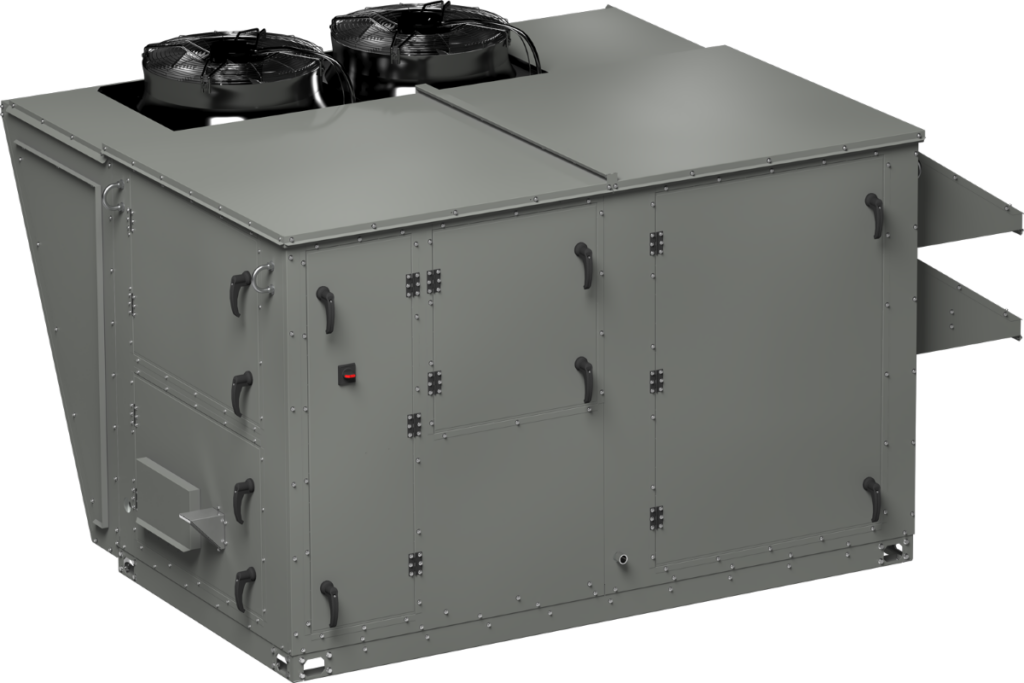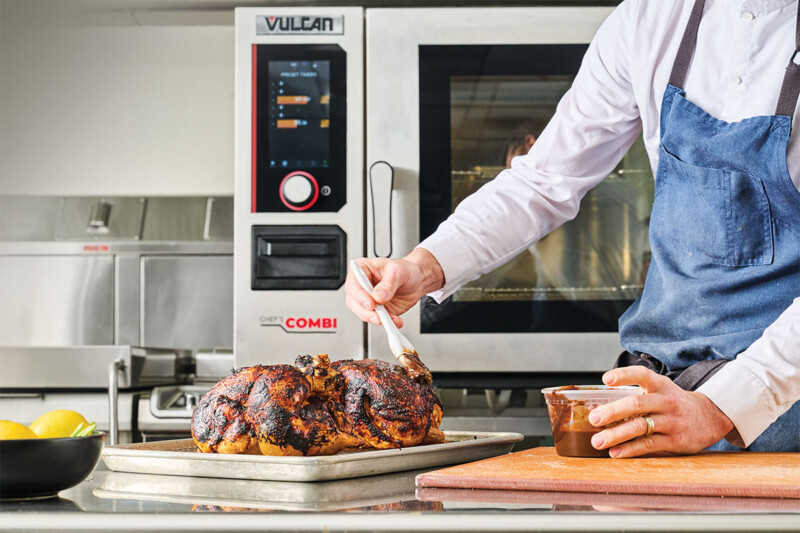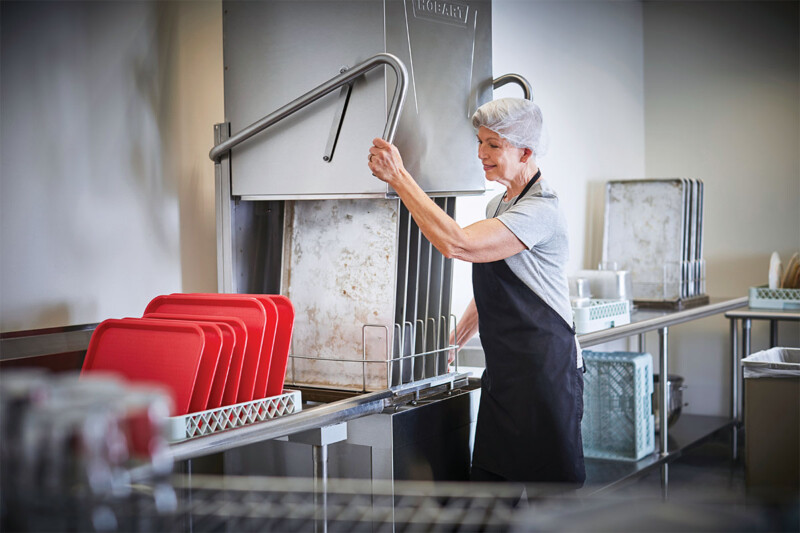SPONSORED CONTENT

Ensuring a safe, comfortable environment for patrons and staff is especially critical for today’s restaurant operator. Poor indoor air quality (IAQ) can lead to inadequate building health, cause serious health problems and, according to ASHRAE, has the potential for increased viral transmission.1 A well-designed, properly regulated ventilation system with higher amounts of fresh air and air exchanges are recommended to improve overall IAQ and provide ultimate comfort and safety for diners, chefs, and waitstaff.
Here are three considerations for improving and maintaining optimal indoor air quality in restaurant settings:
1. Ventilation – While restaurants continue following strict sanitation mandates such as eliminating viral threats on surfaces, viral particles, and other pollutants can still be transmitted through the air. Poor airflow allows odors, dust, bacteria, and allergens to accumulate, causing discomfort and unpleasant dining experiences. Additionally, employee health and work productivity can suffer with improper ventilation. In fact, EPA studies of human exposure to air pollutants indicate that indoor levels of pollutants may be two to five times higher than outdoor levels.2 One key factor to improving IAQ within restaurants is understanding the various components of a kitchen’s ventilation system, and how, despite each serving a specific purpose, they work together to provide proper airflow and contaminant removal. Another important factor is maintaining the kitchen and building ventilation equipment to ensure that a high level of IAQ is withheld over time.
Kitchen ventilation systems remove pollutants and by-products of the cooking process by utilizing exhaust hoods to capture effluent, grease ductwork to safely transfer air and exhaust fans to facilitate this airflow. Rooftop mounted make-up air units then return fresh outdoor air back into the space to “make up” for the air being exhausted. Certain strategies for kitchen make-up air even involve supplying these high volumes of fresh air into the entire building, improving IAQ even further. Between capturing and expelling potential pollutants and supplying high volumes of fresh air, a properly designed and sized kitchen ventilation system is vital for healthy indoor air.
After equipment is installed, it is also crucial for restaurants to conduct routine cleaning and maintenance to ensure equipment is performing properly. For example, buildup of grease and contaminants in the exhaust may cause fans to run inefficiently and airflow to slow throughout the entire ventilation system. Exhaust hood filters, for one, require routine cleanings to make sure the capture performance of the hood system is maintained. Depending on the type of equipment and restaurant cooking applications, daily, weekly, and monthly cleaning regimens might be required.
2. Filtration – A vital part of maximizing indoor air quality is supply air filtration which is essentially filtering the air coming into the space. Accurex offers several different types of filters to consider depending on application requirements and the size of airborne particles that need to be filtered out.
Here are three types of filters to evaluate:
- V-bank filter sections are multiple filters, versus a single upright filter, that are put in a v-bank configuration adding more filter surface area for the air to hit and pass through.
- Aluminum mesh filters have the advantage of being washable, but they have limitations by allowing smaller particles to pass through.
- Pleated, disposable paper filters have varying Minimum Efficiency Reporting Values or MERVs and are most effective at capturing both small and large particles depending on the MERV rating. The higher the MERV rating, the better the filtration, allowing smaller particles to be stopped by the filters. MERV 8 filters are useful for capturing large particles such as dust and pollen but are not effective at capturing smaller pathogens. Filters with a MERV 13 rating or higher can capture approximately 85% of airborne respiratory particles and other pathogens.
In certain situations, it may be worthwhile to use MERV 8 filters in parallel with MERV 13 or 14 for which the combination allows for collection of both small and large particles more efficiently. The higher rated filers are more expensive so using together with MERV 8 rated options, which may need to be replaced more frequently, can saves costs down the road. With the combination, the MERV 8 stops the larger particles and saves the MERV 13 and 14 filters for trapping only the smaller particles that make it through the MERV 8 filters.
3. Humidification – Overly dry or humid environments increase patron discomfort and impacts their overall dining experience. ASHRAE studies on human comfort recommend a 70°F dry bulb temperature at 50% humidity. Designing the proper ventilation system that regulates temperature and humidity levels in both the kitchen and dining spaces can ensure a safe and comfortable environment for all.
Dedicated Outdoor Air Systems (DOAS) are specifically engineered for commercial cooking applications that require high volumes of outside air, 100% fully conditioned for precise temperature and humidity control. One DOAS unit can combine the functions of a make-up air unit and a rooftop unit, eliminating the need for both in some cases, thereby saving space on the roof, installation time, and the expense of having multiple units.
DOAS units can be set up for either partial recirculation or 100% outside air, both of which can provide tempering in unoccupied mode with recirculated air. A DOAS also has the capabilities of variable volume control for additional operational and energy efficiencies. By utilizing high turndown furnaces for heating and digital or inverter scroll compressors for cooling, restaurants can achieve consistent temperature control throughout both kitchen and dining spaces.
Selecting the right ventilation products is critical for maximizing IAQ and the safety of guests and employees. Look to the Accurex team of qualified ventilation experts to provide a solution configured to your restaurant’s specific needs.
1ASHRAE Position Document on Infectious Aerosols, 4/14/2020
2 U.S. Environmental Protection Agency, 12/9/2021
RELATED CONTENT
- Advertisement -
- Advertisement -
- Advertisement -
- Advertisement -
TRENDING NOW
- Advertisement -
- Advertisement -


